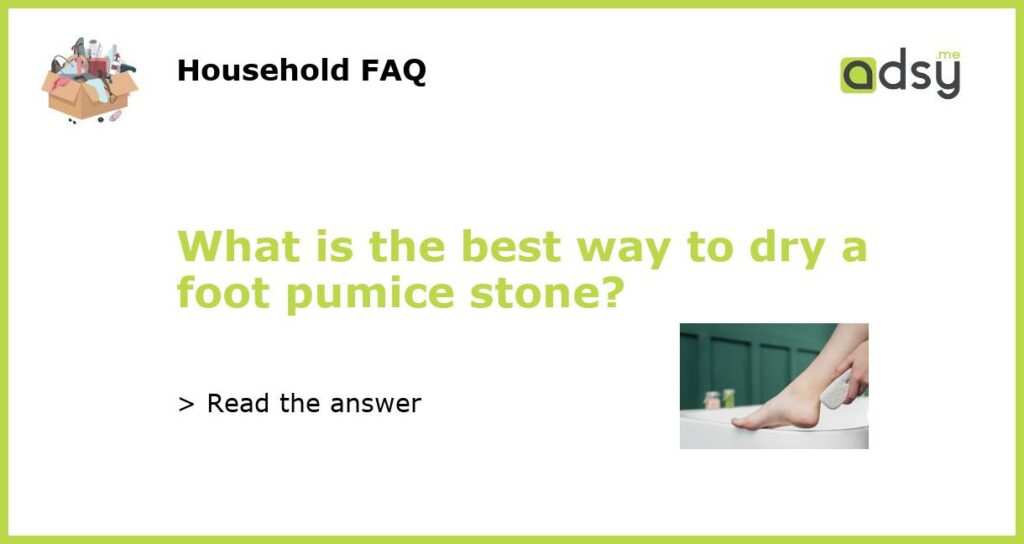The Importance of Drying Your Foot Pumice Stone
Using a foot pumice stone can help exfoliate and smooth out rough areas of the skin on your feet. But like any tool that comes into contact with water and dead skin cells, it’s important to properly clean and dry your pumice stone to prevent the growth of bacteria and fungi. While you may be tempted to simply rinse off your pumice stone and set it aside, there are a few steps you should take to ensure it dries completely and stays safe for future use.
Rinse and Disinfect Your Foot Pumice Stone
Before you can dry your foot pumice stone, you need to clean it. Rinse the stone off under warm, running water and use a small amount of soap or baking soda paste to scrub away any dead skin cells or debris. Use a small brush or toothbrush to get into any crevices. Then, soak the stone in a solution of equal parts water and white vinegar for five to ten minutes. This will disinfect the stone and help to kill any remaining bacteria or fungi.
Dry Your Foot Pumice Stone Thoroughly
Once you’ve disinfected your pumice stone, it’s important to dry it completely. Use a clean towel to pat the stone dry, removing as much moisture as possible. Then, set the stone aside in a well-ventilated area to air dry completely. It’s important to not use your pumice stone again until it is completely dry to prevent the growth of bacteria and fungi.
Avoid Sunlight and Heat
While it may be tempting to speed up the drying process by placing your pumice stone outside or near a heat source, this can actually damage the stone. The sun and heat can cause the stone to dry too quickly and crack or break. Instead, always air dry your pumice stone indoors and away from any direct sunlight or heat sources.
Consider a Separate Storage Container
Finally, consider keeping your foot pumice stone in a separate storage container to further protect it from bacteria and fungi. Use a breathable container that allows air to circulate to prevent moisture buildup. It’s also a good idea to store your pumice stone away from other tools and surfaces that may come into contact with bacteria or fungi, such as your shower floor.






